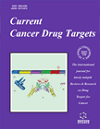-
oa Editorial [Hot topic: Special Edition Myeloproliferative Neoplasia - Disease Pathogenesis and Treatment Options (Guest Editors: D. Wolf and H. Rumpold)]
- Source: Current Cancer Drug Targets, Volume 11, Issue 1, Jan 2011, p. 1 - 2
-
- 01 Jan 2011
- Previous Article
- Table of Contents
- Next Article
Abstract
Almost 50 years ago, David Hungerford and Peter Nowell first described the Philadelphia chromosome as characteristic cytogenetic abnormality in Chronic Myeloid Leukemia (CML, reviewed in [1]). In the following decades, the advent of molecular biology allowed the exact characterization of the molecular pathogenesis of the disease, which served as basic knowledge for subsequent development of tyrosine kinase inhibitors (TKI) directly inhibiting the constitutive activity of the BCR-ABL tyrosine kinase. Due to their outstanding clinical activity, these molecularly designed drugs represent a paradigm for targeted therapies in modern hemato-oncology. Thus, it appeared at the first half of the last century, that the milestones achieved in the understanding of the pathogenesis and therapy of CML would outcompete the clinical progress in Philapdelphia-negative myeloproliferative neoplasia (MPN). The latter have first been systematically categorized as a disease group by Wiliam Dameshek in the last century by identification of common clinical characteristics such as hemorrhage, thrombosis and leukemic transformation, which are hallmarks of polycythemia vera (PV), essential thrombocythemia (ET), and primary myelofibrosis (PMF, reviewed in [2]). Accordingly, the gain-of-function mutation JAK2V617F has been described as the most prevalent genetic abnormality in Ph-negative MPN [3-5]. However, recent systematic genetic screens including analyses of SNPs and copynumber variations revealed a much more complex picture of the molecular pathobiology of Ph-negative MPN than initially assumed [6, 7]. In analogy to the development of TKIs in CML, the high abundance of the JAK2 mutation in Ph-negative MPN also provided a rational target for novel treatment strategies using JAK2 inhibiting compounds. To the much of our surprise, despite marked clinical activity of JAK2 inhibitors in Ph-negative MPN in terms of improving clinical symptoms, their anticlonal activity is obviously limited [8] when compared to the extremely high anti-clonal activity of TKI therapy in CML [9]. This observation led to a reverse translation from bed-to-benchside, with the ultimate goal to more accurately explore the functional relevance of the JAK2 mutation for the disease phenotype. In CML, we are currently on a path towards cure by further exploring potential targeting strategies to eradicate the CML-repopulating stem cell population, which is despite the high anticlonal activity of TKIs in CML, not eliminated in most patients so far. Thus, extensive research is currently ongoing to further characterize the molecular basis for a better understanding of stem cell TKI resistance thereby providing the key for future innovative curative treatment approaches. In contrast, in Ph-negative MPN, the repopulating stem cell population remains to be identified. This review series covers the current state of the art knowledge of the complex molecular pathogenesis of Ph-positive and negative MPN. This serves as a basis for the understanding of current treatment concepts, which are discussed in detail throughout this MPN special edition. Moreover the potential of immunotherapies for disease eradication in MPN as well as the appealing stem cell concept raising the problem of definite disease eradication are discussed in light of latest scientific data. The gust editors cordially thank all experts for their contribution to this MPN special edition.


